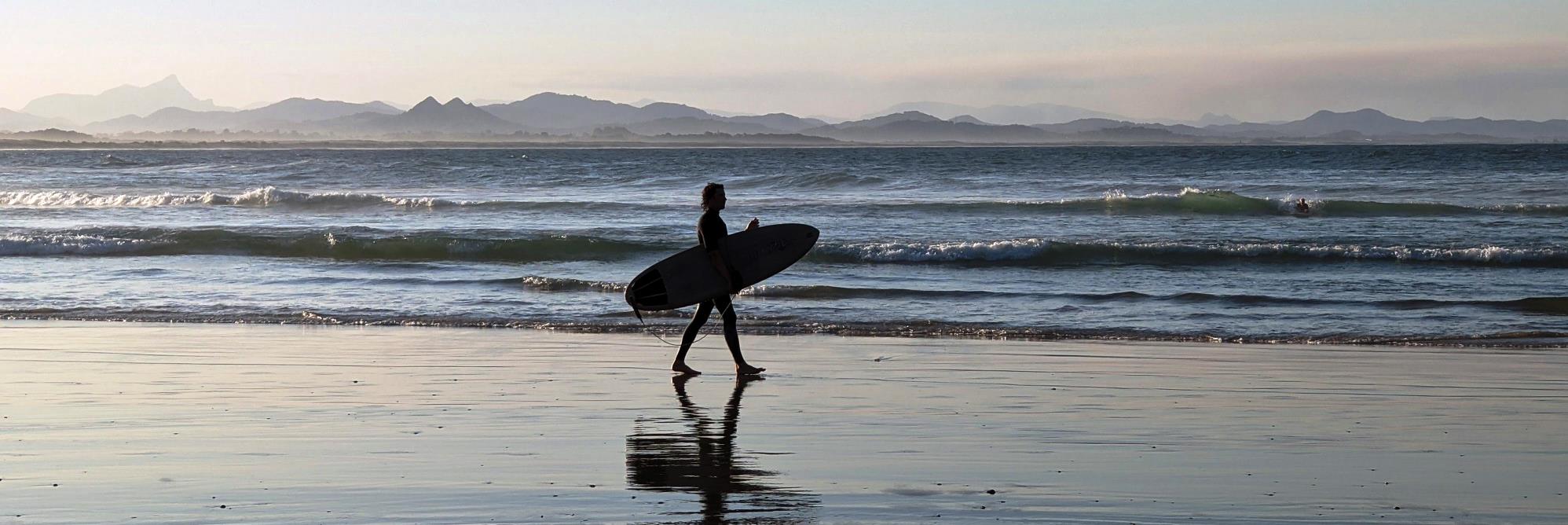
australia

Where: Coffs Harbour, Yamba, Angourie, Ballina, Byron Bay, Urunga, Nimbin, Wauchope, Wingham.
When: October 2020
What: Whale watching on Muttonbird Island; Big Banana; Forest Sky Pier; Angourie Blue and Green Pools; Most easterly point of the Australian mainland; Cape Byron Lighthouse walk; Byron Bay sunset and surfers; Nimbin hippie village; Nimbin Rocks; Big Prawn; Ebor Falls on the Guy Fawkes River; Urunga Lagoon Footbridge; Old Bottlebutt Tree; Rainforest; man wrestling with snake on the roadside.
Wildlife spotting: White Ibis Bird, Humpback Whales, Jellyfish, Flying Foxes; Brush Turkeys; Kookaburras; Galahs; giant snake; Fidler Crabs.
Mishaps or illnesses: Staying overnight in motels straight out of central casting for a Hitchcock film.
With ongoing World events affecting international travel, I quietly resigned myself to the fact that another holiday would be spent travelling around New South Wales in a car. In July, on our road trip out to Broken Hill, we travelled so far to the State's west that we literally (but also metaphorically) went back in time. Having travelled to the State's far west, and having already been far south, the only direction left was northward. Up until this point the furthest north I have travelled in New South Wales was Port Macquarie, some 314 kilometres up the coast from Sydney. Byron Bay is well over double this distance at 758 kilometres. Byron Bay is so far north, in fact, that we came tantalisingly close to the Queensland border - one of two remaining Australian states or territories I've yet to visit. And so this was an 2000 kilometre road trip to New South Wales' Far North, stopping in Coffs Harbour and the legendary Byron Bay and several incredible places in-between, before doubling back on ourselves and heading back to the State capital. What I thought would be a pedestrian trip turned into an adventure with giant stinging trees, thousands of Flying Foxes and sub-tropical rainforests. This Travel Chronicle was initially intended as a single blog post on my Australia Diary but, with the trip far excelling itself in terms of incredible vistas and wild encounters, a full Chronicle was justified and entirely necessary.
Our first stop was Coffs Harbour, famous for its coastline, as being a useful stop-off for many en-route to Byron and for its 'Aussie big things' banana. Outside of our run-down motel room, there was enough to keep my camera occupied. Soon upon arrival we headed up the incline of Muttonbird Island for an awesome view back towards Coffs, its little boats sparkling in the late sunshine and the wind rushing through the island's lush green vegetation. We also took time to enjoy the expanse of blue, the Pacific Ocean, home to migrating Humpback Whales which made tantalisingly infrequent appearances by flapping their pectorals or belly flopping. The following day began with an obligatory stop off at the aforementioned giant plastic fruit installation as well as a short stroll along the Forest Sky Pier with sumptuous views of Orara East State forest. A nearby coffee truck operated by a small Indigenous business serving delicious brownies with Wattle dripping set us up for our impending onward journey northward to Byron.
We pulled over at Yamba to see the Angourie Blue and Green Lagoon Pools which, because of dangerous algae, came with a sign warning of "serious harm to humans". Despite this, the blue pool in particular played host to a score or more of schoolkids jumping from the cliff edge opposite - cheered on and congratulated by their parents. We sauntered over the rocks of Angourie Point Beach - one of the prettiest little beaches I think I have ever seen. With another coffee enjoyed in a local coffee shop, we set off for the legendary Byron - a giant of the New South Wales Far North coast. Arriving with just a few hours of daylight remaining but with temperatures still hovering around 30 degrees, we headed up towards the Cape Byron Lighthouse - a 3.7 kilometres looped walk which took us past the most easterly point of the Australian mainland. The descent was thankfully characterised by cooler temperatures brought about by a soft breeze blowing in from the coast. We hung around for an our or more, savouring the iconic beach sight of silhouetted surfers, until the sun finally dropped below the horizon. Beholding and photographing the sun setting on Byron Beach was, of course, compulsory and, with this obligatory item crossed off, we headed to Ballina for eats and sleeps - a small town 30 kilometres outside of Byron which still had accommodation available at the eleventh hour when we were finalising plans. Ballina was a good choice simply because it was away from the crowds and families, offered more for our money, and was home to a couple of high quality places to eat. It was also home to the second 'Big Thing' of the trip - a giant prawn stationed on steel girders outside a Bunnings Warehouse.
As if we hadn't travelled far north enough, the final day was spent heading an additional 65 kilometres north westward towards the (in)famous hippy village of Nimbin. Although not very far comparatively speaking, the winding roads, with their hairpin bends and questionable road coverings, made the journey feel longer and more tiring. Nimbin Rock greeted us on the outskirts of the town, medium-sized rocky peaks jutting from already high mountainsides. A sight further up the road declared, "Welcome to Nimbin: Home to the 1973 Aquarius Festival". Indeed, the reference to the 1970s is culturally significant being, as it was, the moment many came to the village - and never left, staying to set up their own alternative lifestyles. Indeed, the main Cullen Street is awash with stereotypical iconography one readily associates with alternative cultures: rainbow flags fluttering the words "Love is Love", Bob Marley posters and bills stickers emblazoned with "One Love" in Reggae colours, and a thousand creative renderings of the green cannabis leaf. Indeed, I had been out of the car for approximately three minutes when a lady in her 70s offered to sell me some "Hash". I politely declined. Indeed, the overall prevalence of drugs in Nimbin had me questioning whether it was legal or, at least, tolerated by authorities. It had us quickly checking our phones out of interest and fascination, for New South Wales didn't seem like the state where this kind of thing would be allowed. It isn't - and leaving Nimbin with anything in your car which shouldn't be there would result in the full force of the law. Nimbin's main thoroughfare is characterised by frontier-style shop facades - the kind I have seen in many an Australian country town, but adorned with brightly coloured and psychedelic murals: idealistic sunbursts, organic Indigenous designs and rainbow patterns - all set against a backdrop of luscious green mountains. Nimbin is quite the place.
Our drive back towards Coffs Harbour for our final night rounded off nicely with a stop at Ebor Falls. A blue New South Wales regional roadside sign declared we had entered the state's "New England" region. Ebor is a double-tiered waterfall on the Guy Fawkes River along the evocatively-named Waterfall Way. Recent bushfires hindered access to the main viewing platform but with careful positioning it was possible to capture great views of the waterfall before daylight dimmed. A glimpse down the valley in the dwindling light presented a moody and intense scene - one made all the more powerful by the presence of prominent scorched branches, blackened remnants of the bushfires which swept through here less than a year before. Indeed, even after the many months which have passed, a distinctly ashy smell continues to linger here. Our car wended its way back down the slopes of the Waterfall Way - one punctuated by a number of understated and delicate waterfalls trickling down the mountainside by the road. Bizarrely, the journey back to Coffs was made memorable by the sighting of a man by the roadside wrestling with a giant snake in the grass. After more than four years of living here, there are still things I don't understand about Australia. This was yet another case in point. As if by way of omen, this sight foreshadowed wilder adventures to come the following day...
A mistake actually led to us enjoying a walk along the wonderful Urunga Footbridge, a wooden boardwalk which snakes across the tranquil waters of the Kalang River, the Bellinger River and out to the tempestuous Pacific Ocean. It's a jaunt characterised by sightings of jellyfish, Fidler Crabs darting in and out of their mud holes and water lapping at the edges of mangrove swamps. A walk along the bridge was a heartwarming experience, with many passing by in the opposite direction wishing us a "good morning" or "g'day". Urunga was a good find and the fact that its discovery was purely accidental made it all the more satisfying. If I've learnt one thing about road trips in Australia, it's that you never know what you'll come across next. Further south we pulled over at Wauchope, a town in the Mid North Coast region, for a panini and coffee (both were delicious and served with a smile). By now the heat and humidity were rising, but it was only a short drive to our next stop: the magical Old Bottlebutt tree, an ancient Red Bloodwood tree located in Burrawan State Forest and the largest recorded example of its kind anywhere. The base of the tree is gigantic, its trunk leading high up into the forest canopy. Indeed, trying to wrap your arms around its bulbous bottom bulk is a fun way to engage with Mother Nature one on one. The affectionately-named Old Bottlebutt sits in a charming forest of palm trees, the leaves of which were rendered positively luminous by the sparkling sunshine of mid-afternoon. Old Bottlebutt is the kind of thing I would more readily associate with some magical African setting; the kind of natural wonder I would be prepared to travel thousands of kilometres to see. But here he was, residing humbly in my home state, in the centre of a palm forest and with only a small trickle of visitors to momentarily disturb his serenity.
A further 80 kilometres south brought us to Wingham, a place where frontier town shop facades crowd in on the main park square from all four sides, with the square's focal points consisting largely of a giant tree log and an Australian Air Force jet positioned indelicately on a pedestal. A short walk beyond this uninspiring ensemble lies the Wingham Brush Nature Reserve. It was immediately clear that we were not in for a run-of-the-mill bush experience, with a sign declaring at the entrance, "Beware of giant stinging trees" and "Please enjoy your encounter with our bats..." We'd entered a sub-tropical rainforest which was positively running alive; mosquitoes buzzed all around and Brush Turkeys zig-zagged across the wooden walkway seemingly oblivious of our presence. Otherworldly bird sounds radiated out across the rainforest canopy, sounds neither euphonic nor cacophonic but, rather, sounding like a fictitious creature had escaped from a computer game. It must have been a trick of the light but it took a few minutes for my eyes to adjust and thus see what was dangling directly above our heads: hundreds, no thousands, of Flying Foxes, bats with orange bellies and black wings. Their screeches were straight out of a Stoker novel. I was caught somewhere between horror and fascination, tilting my camera toward the sky. Every tree was teeming with the things and, combined with the buzzing insects, the zooming turkeys, the Sci-Fi birds, the giant Moreton Bay fig trees and the humidity, the whole experience was an extraordinary assault on the senses. I could only spend around thirty minutes in the forest and felt some relief when we exited back out onto the main road as if I had slipped back through a fantasy portal.
And so, from paradisal beaches with pinky sunsets and silhouetted surfers, to giant stinging trees infested with bats; from magical waterfalls amid moody landscapes, to a counter-culture hashish-hippy village in the middle of nowhere, New South Wales once again proved to be as varied and vast as she is incredible.

Boulders and beach at Coffs Harbour.
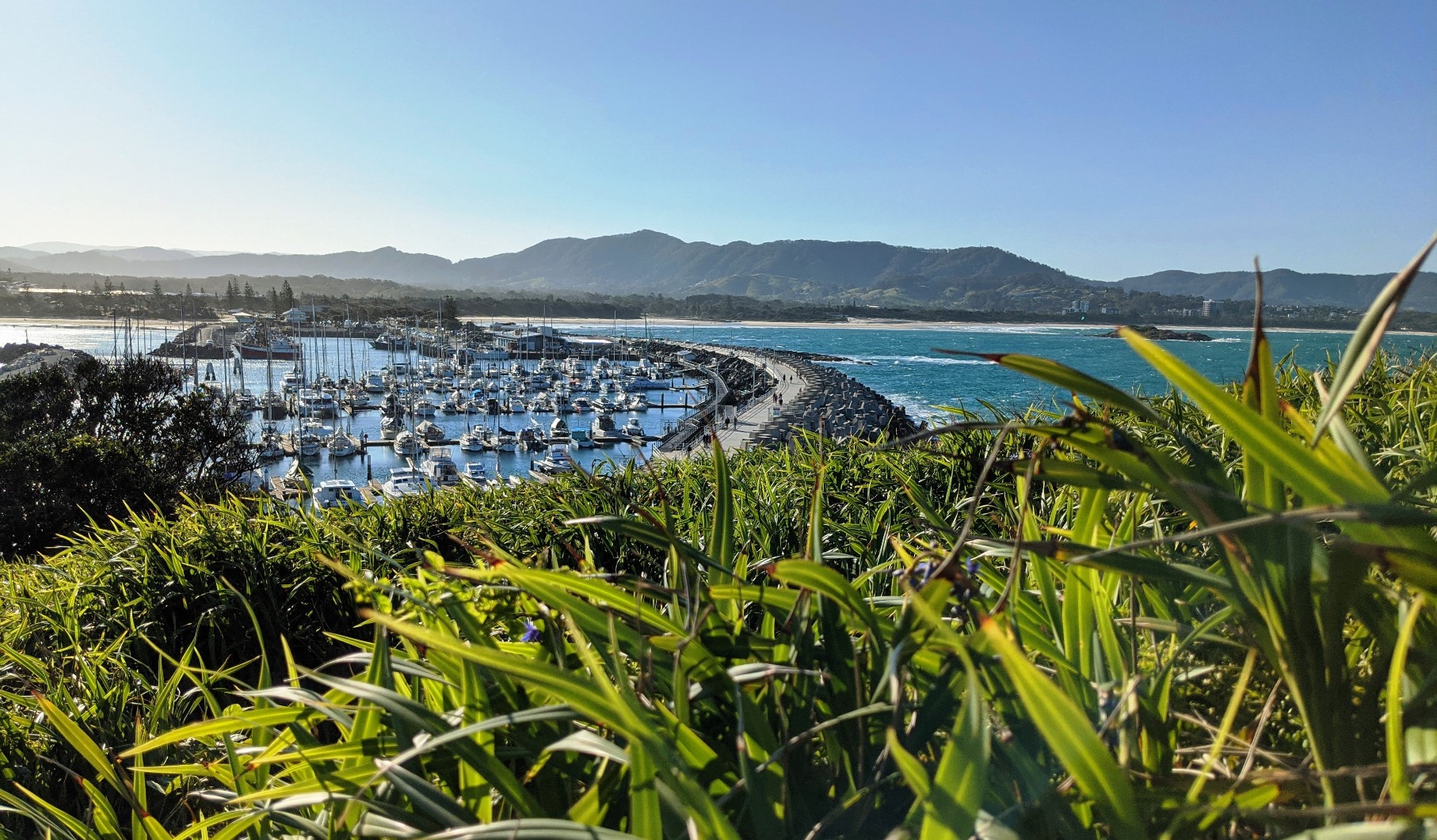
Coffs Harbour from Muttonbird Island.

The path snaking back to Coffs Harbour mainland from Muttonbird Island.
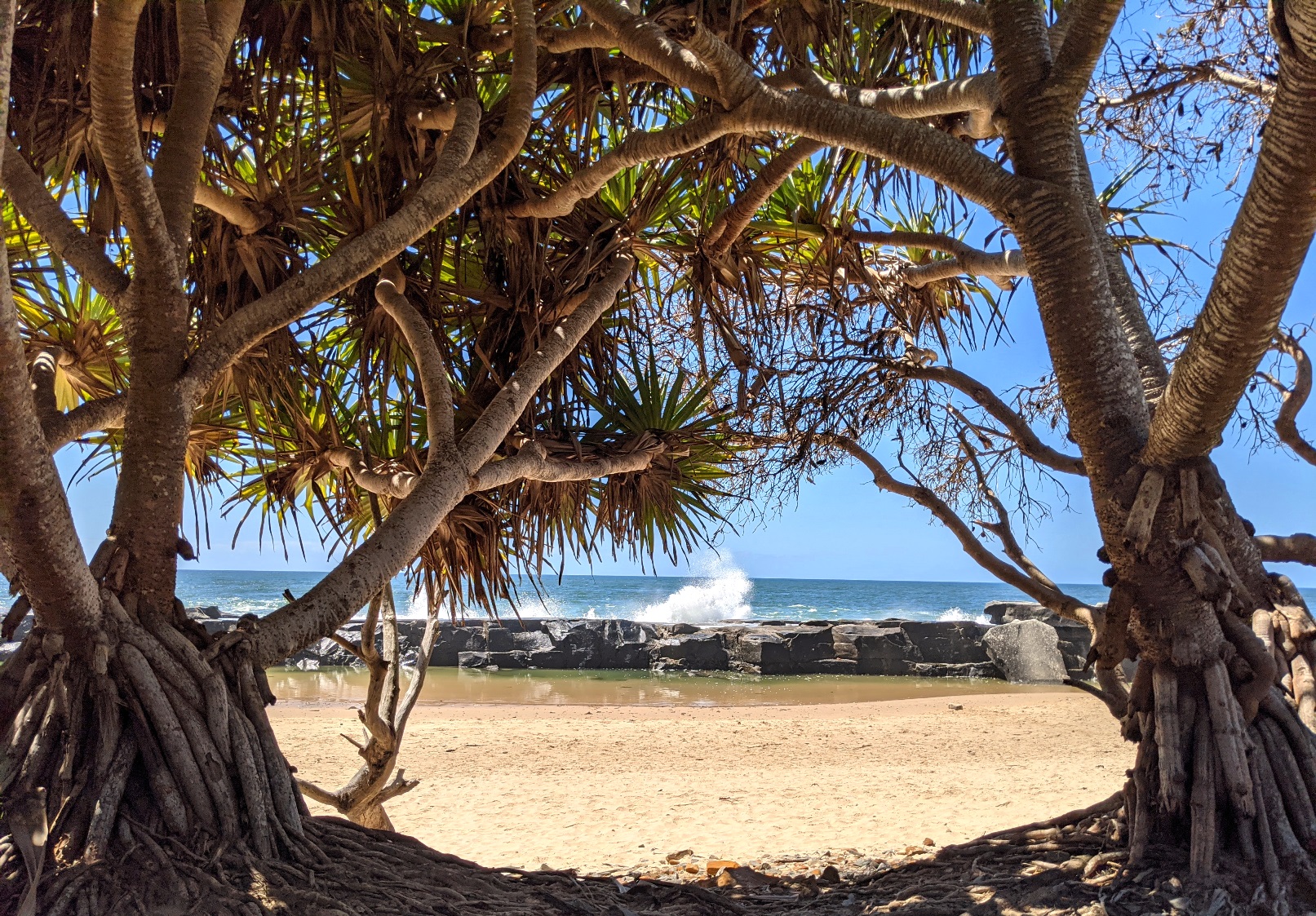
An otherworldly Pandanus tree faces the Pacific Ocean at Yamba in New South Wales' Far North. Australia has the weirdest trees.
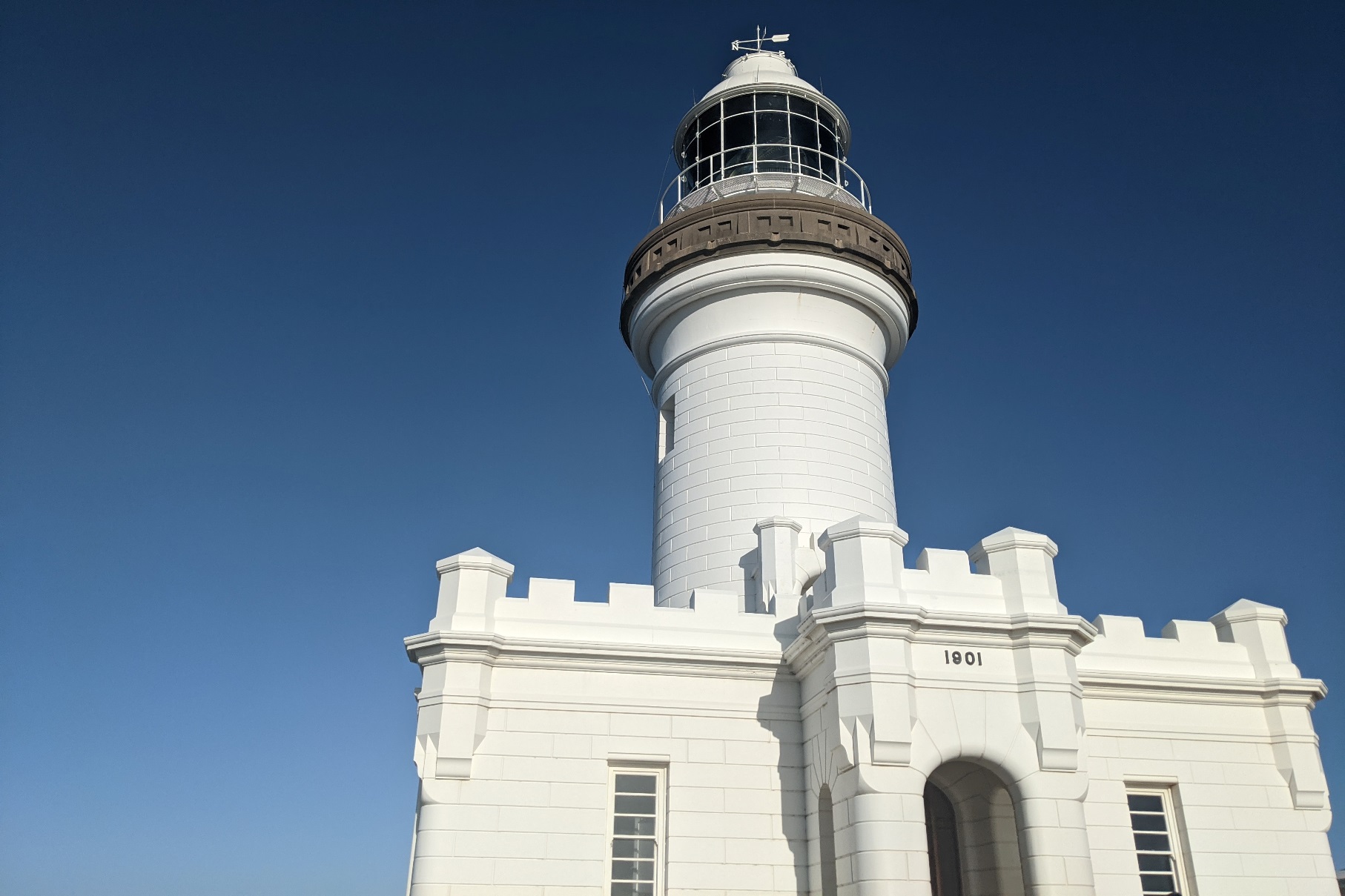
Cape Byron Lighthouse: the pinnacle of the 3.7km loop walk.

The pastels of Byron Beach at dusk.

Silhouetted surfer at Byron.
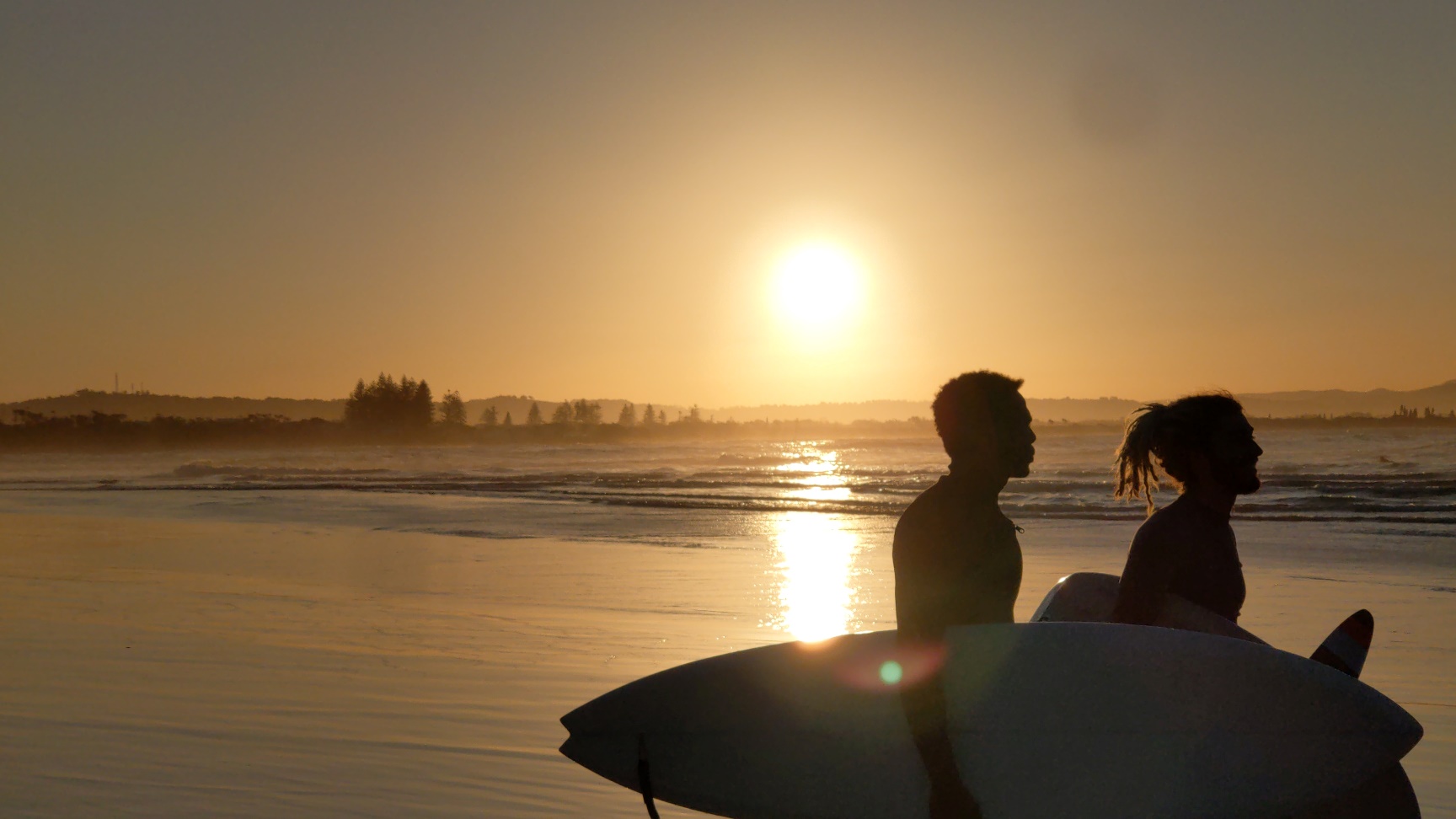
The golden hour at Byron Beach.

Byron Beach's pastel shades at dusk.
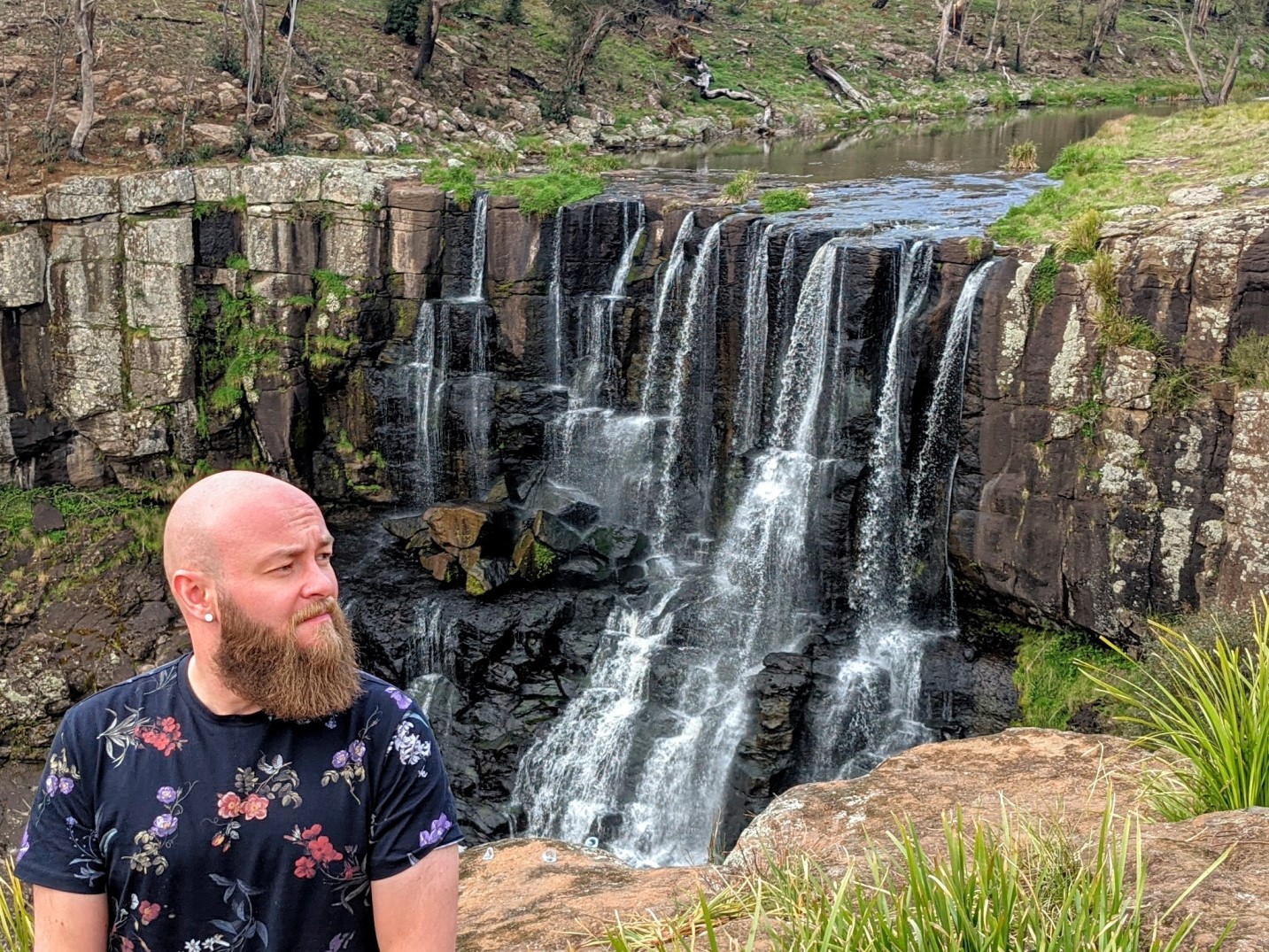

The two-tier Ebor Falls along the Guy Fawkes River, part of the wonderful Waterfall Way in the state's New England region.
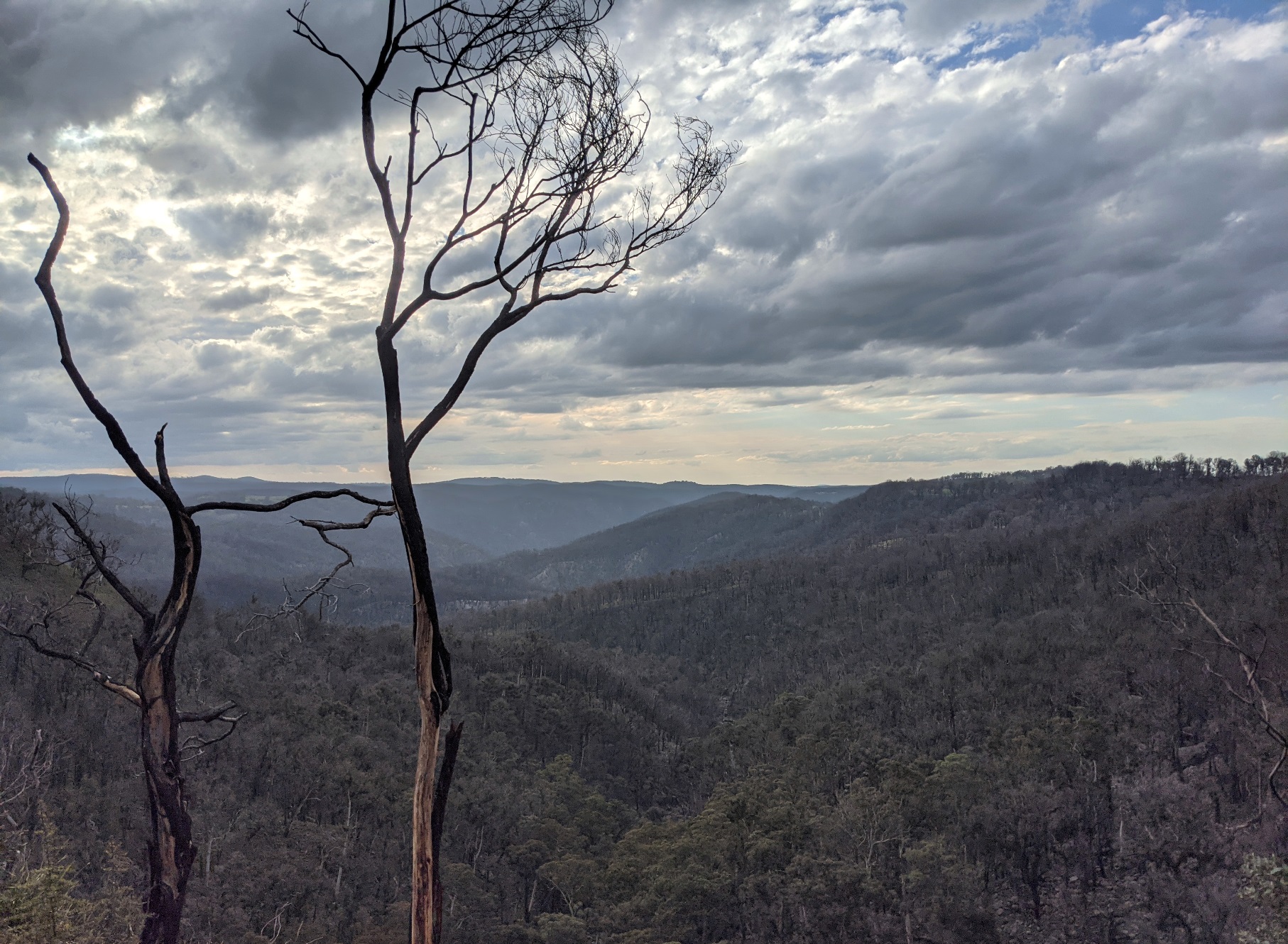
A sumptuously moody Ebor Valley; a blackened tree in the foreground a reminder of NSW's devastating bushfires which swept through here last year.

The wonderful Urunga Footbridge.

The dense palm tree canopy in the Burrawan State Forest near Wauchope.
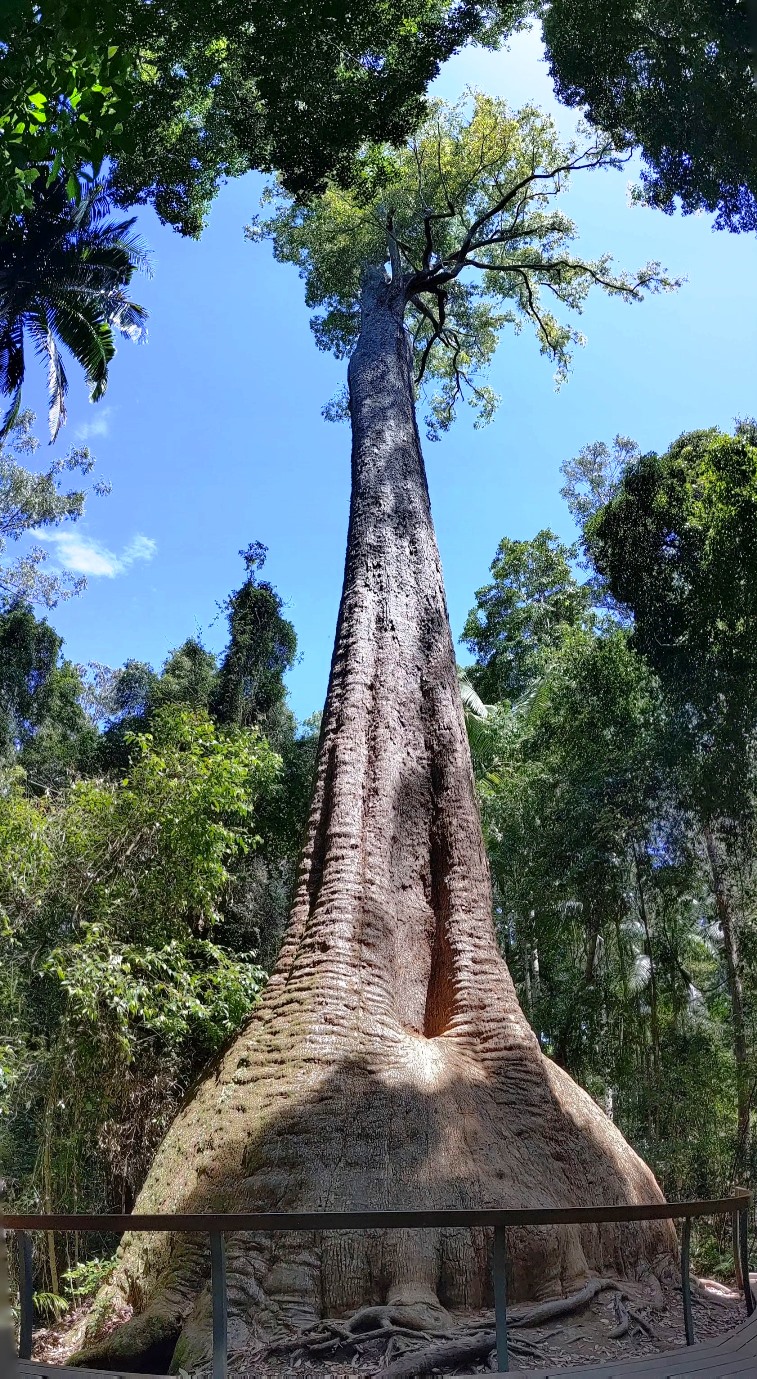
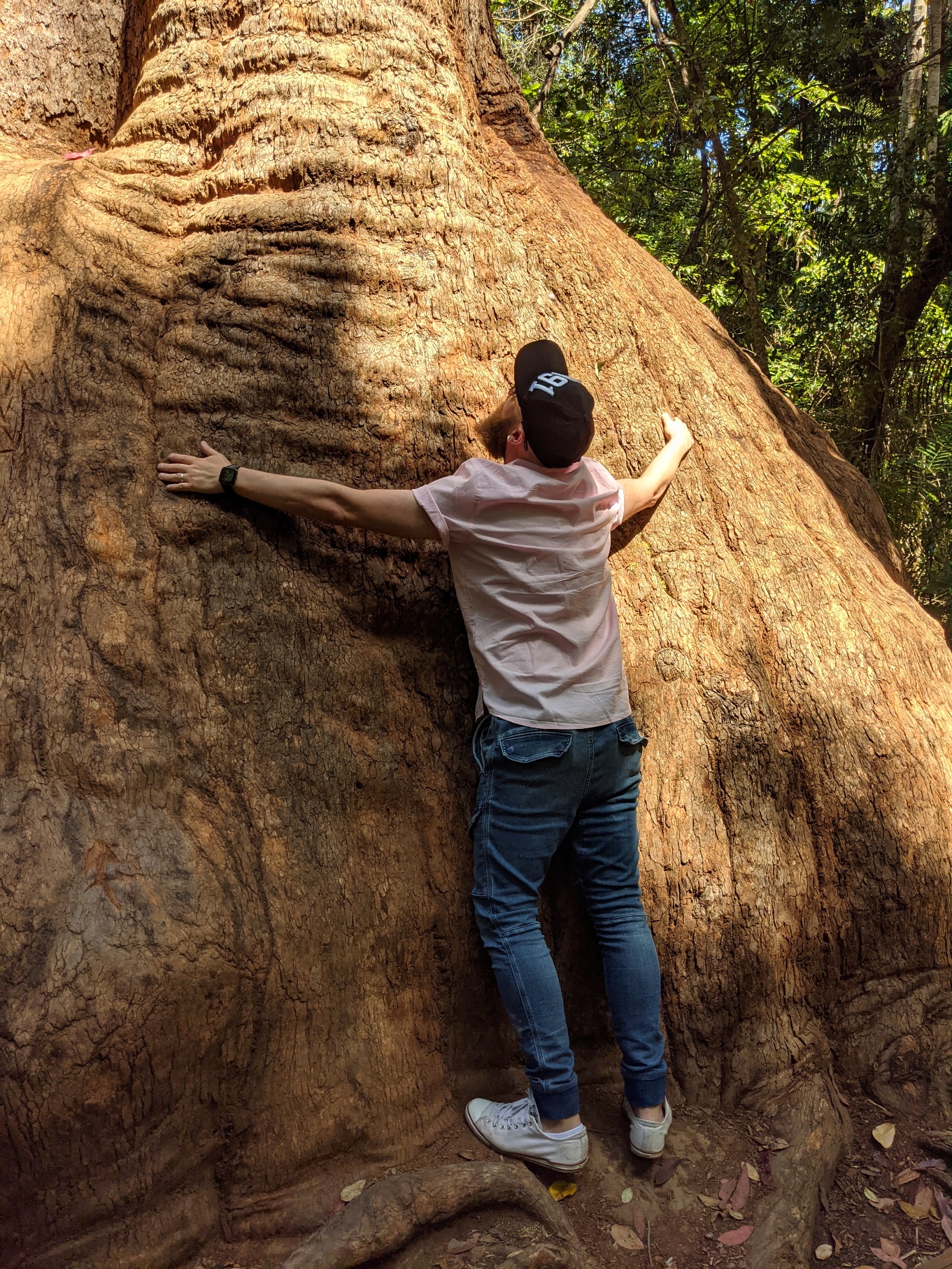
The wonderful Old Bottlebutt tree, an ancient Red Bloodwood located in Burrawan State Forest and the largest recorded example of its kind - so tall that to photograph it I had to switch my camera to its panoramic function.
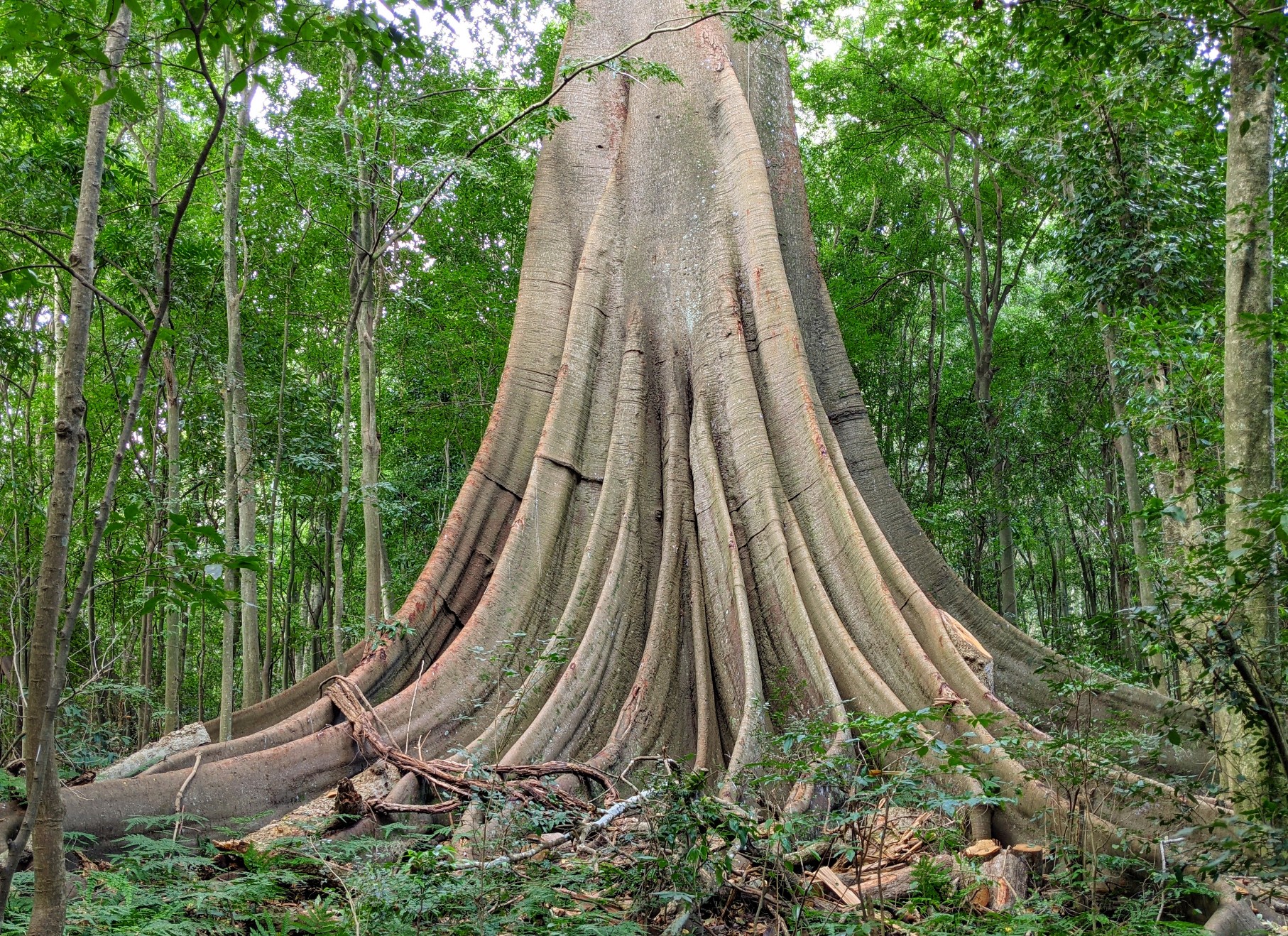
The gigantic Moreton Bay fig tree in the Wingham Brush Nature Reserve.


Hundreds of Flying Foxes dangling from the trees above our heads in the Wingham Brush Nature Reserve.
travel tips, links & resources
- A road trip through any part of Australia is a chance to experience 'real Australia' outside of the generic state capitals. Little country towns offer the chance for an awesome coffee and tasty slice of banana bread. Pull over and support local Australia.
- There are two options when travelling along the coast: take the freeway - a concrete and soulless affair that will get you to your destination the quickest or, secondly, travelling along the brown numbered Tourist Drives for a more scenic experience. Balancing practicality with enjoyment, we opted for a combination of both.
- Book your accommodation well in advance if you can. Australia is a land of trailer parks and camp sites and so if you're seeking something more luxurious do your planning early. In smaller towns motel rooms are quite basic but you can often expect tea and coffee making facilities as well as a microwave. It is best to lower your expectations with regards to Australia's accommodation offering; expect expensive and low quality in most places.
- Savour the Ride: try not to pack too much into your itinerary - much of your enjoyment will come from having the freedom to pull over and enjoy something you weren't expecting to see. It's a cliche but it's important to remember that the journey is also the destination!
- As with all rural areas, keep an eye out for signage warning of dangers in the area: this could be anything from sharks, to dangerous algae, to giant stinging trees.
- Road tripping is a quintessentially Australian pastime. Aside from flying, it is really the only practicable way of travelling around this giant scorched land. Incorporating a road trip element not only affords you a more grass roots experience, but you also have a chance of spotting the curiously large objects along roadsides, literally named 'Big Things'. Expect to see anything from giant bananas, to guitars, rocking horses and a crocodile wearing boxing gloves. It's a glimpse into the irreverent humour of the Aussies and part of the culture which has developed around hitting the open road.
- Check out Aussie Towns, a fabulous website which gives you a neat summary and a little background on almost every town in Australia sorted alphabetically.
- Find out more about the Urunga Boardwalk with this useful booklet.
you may also like
